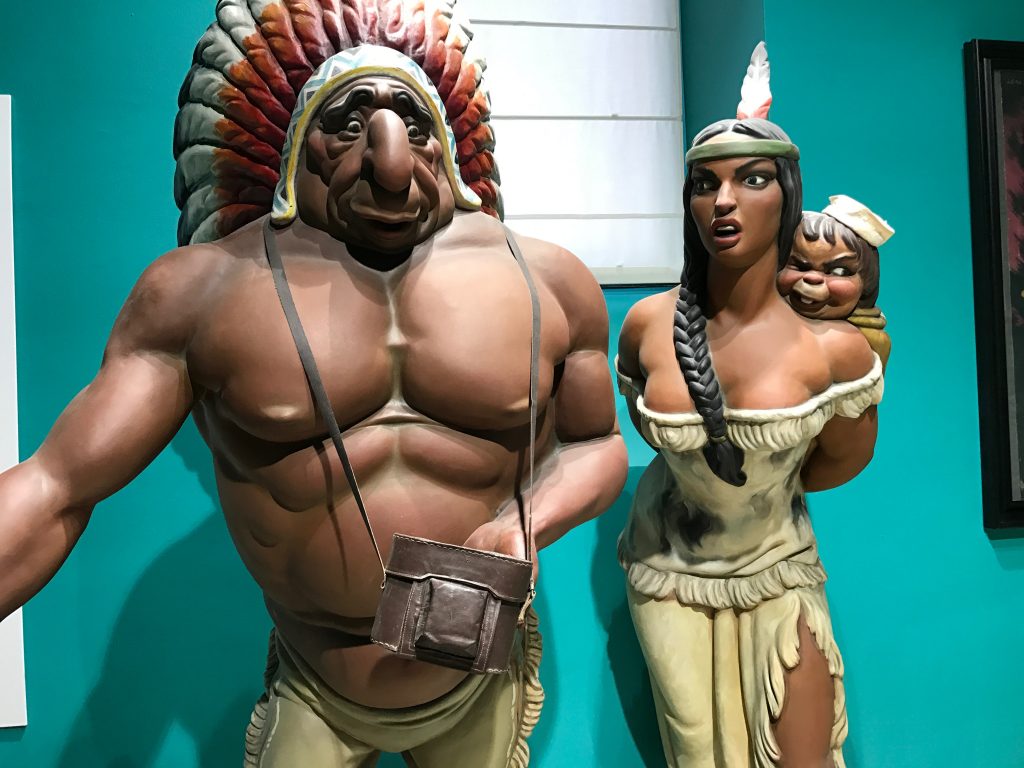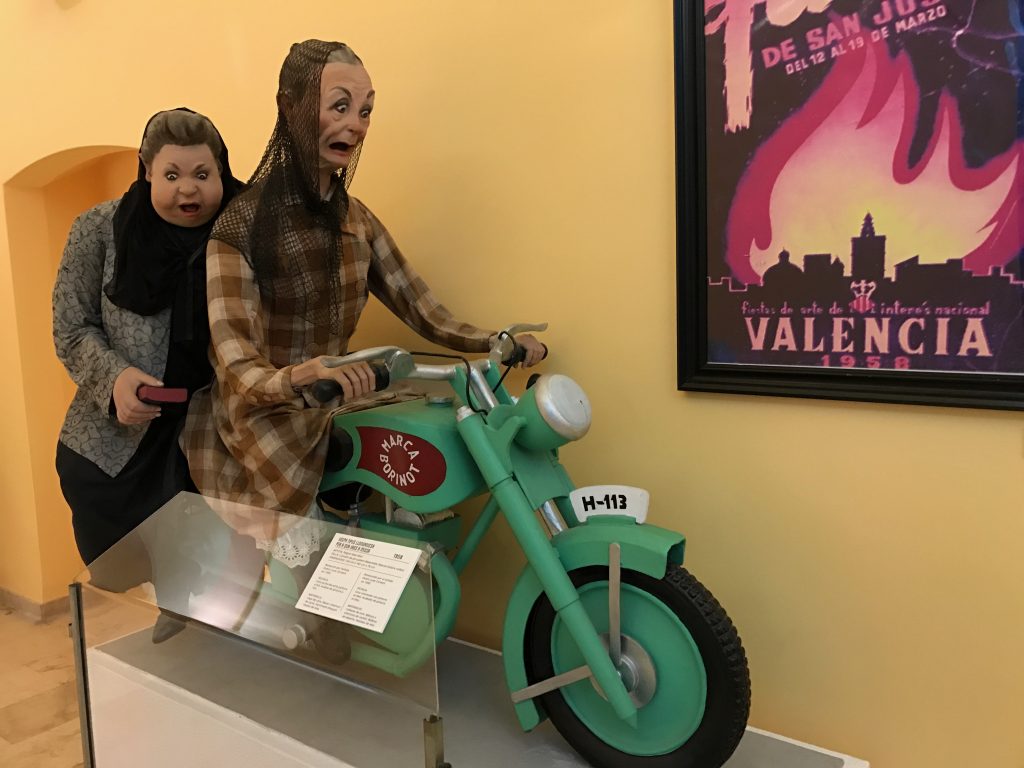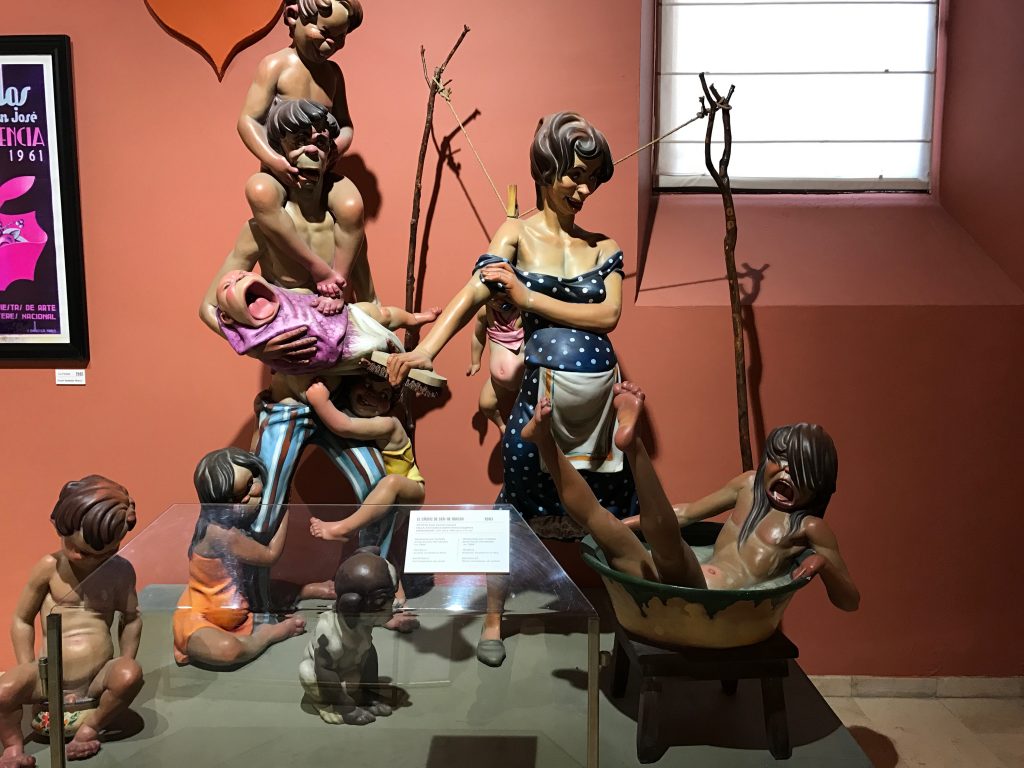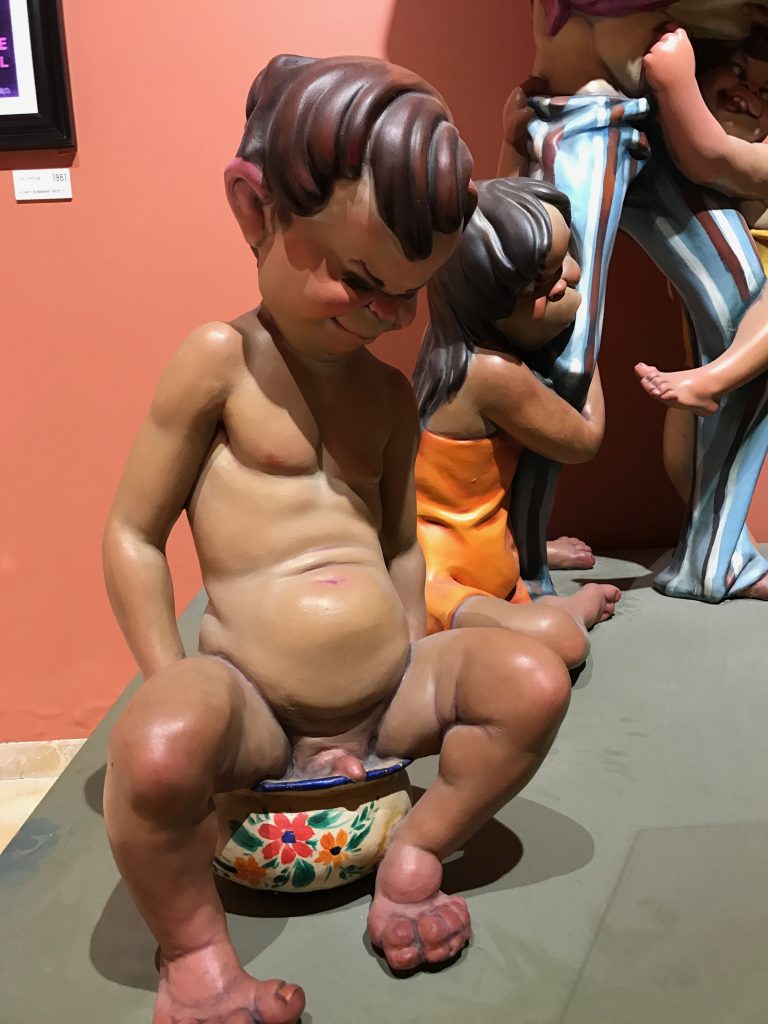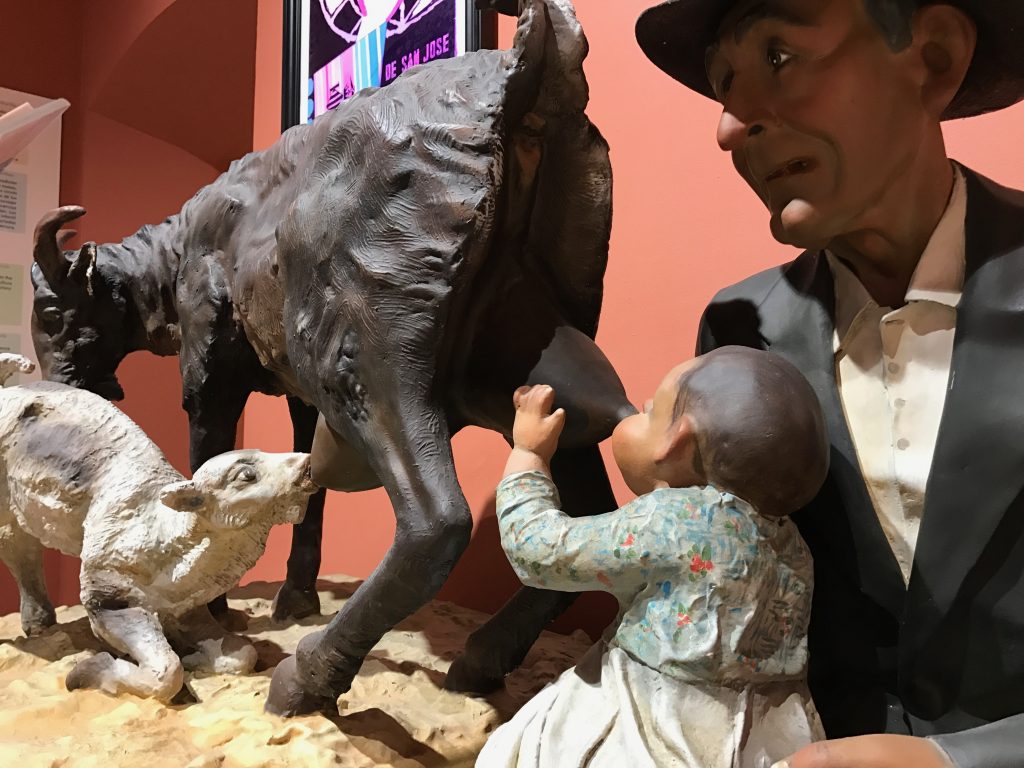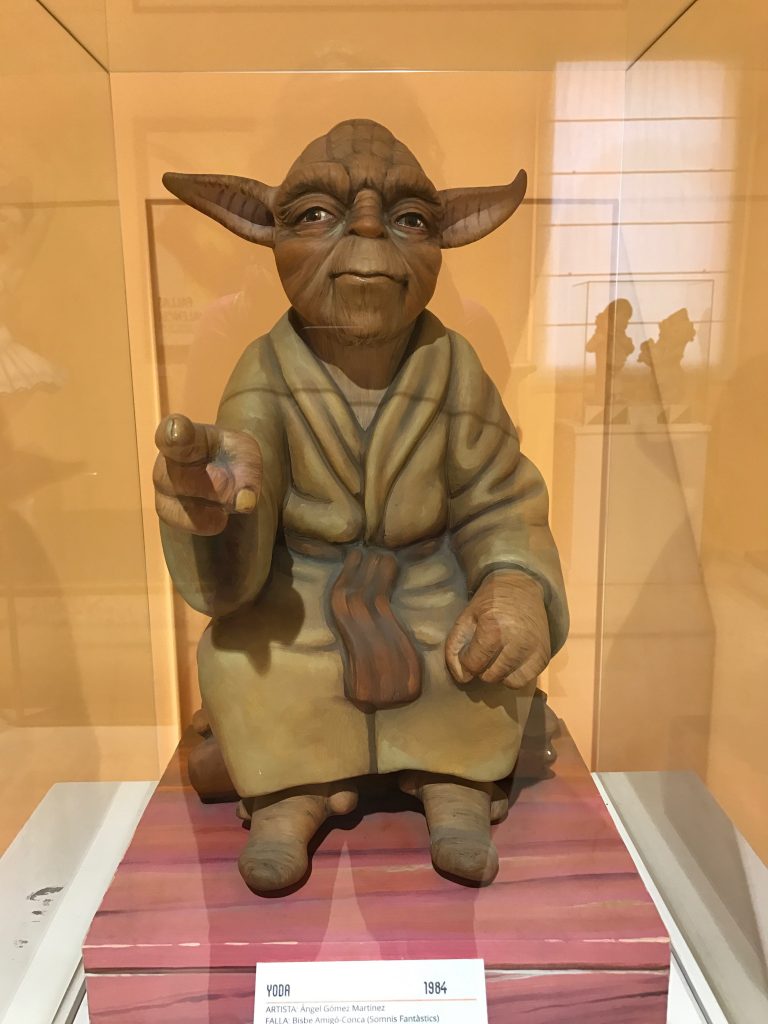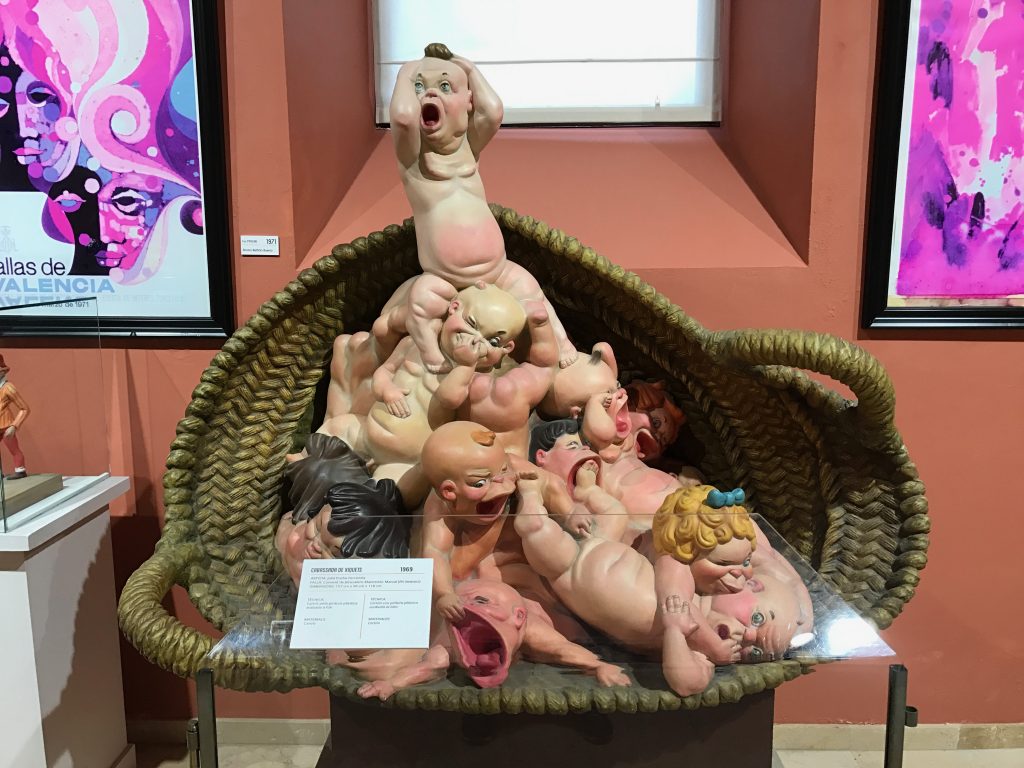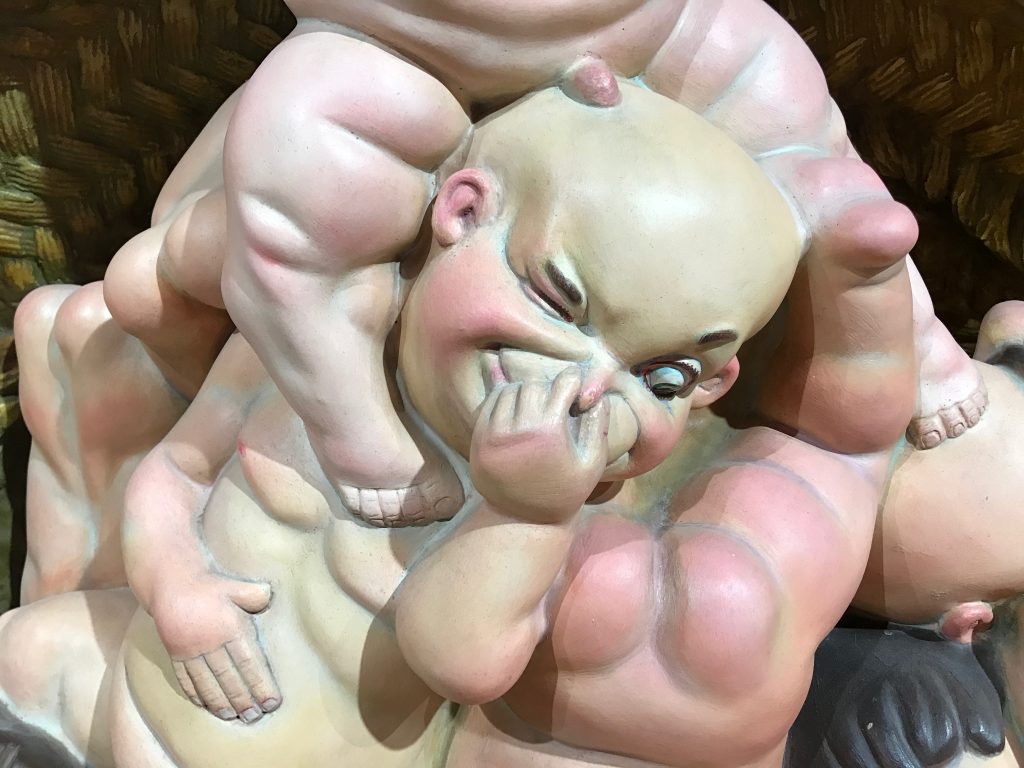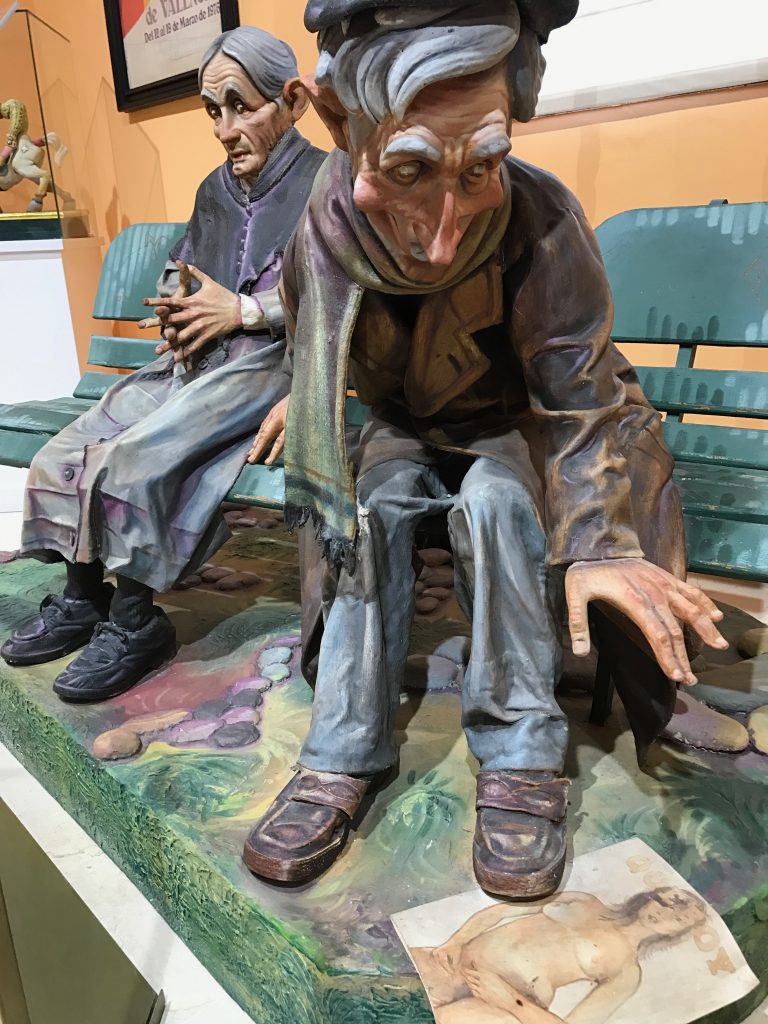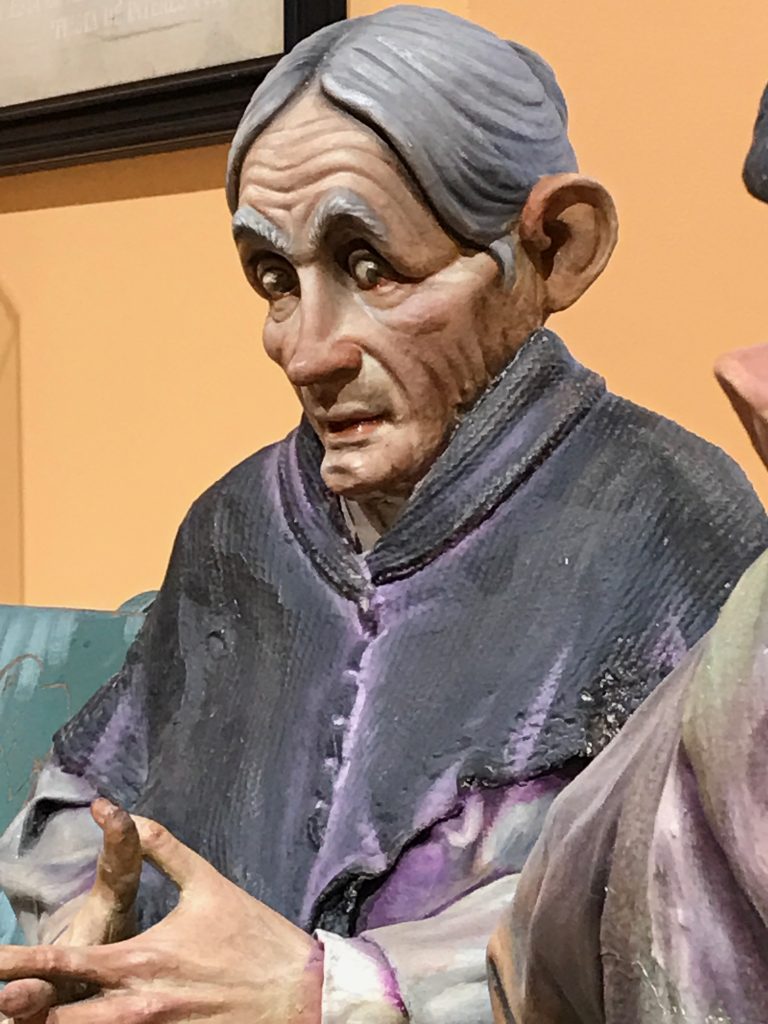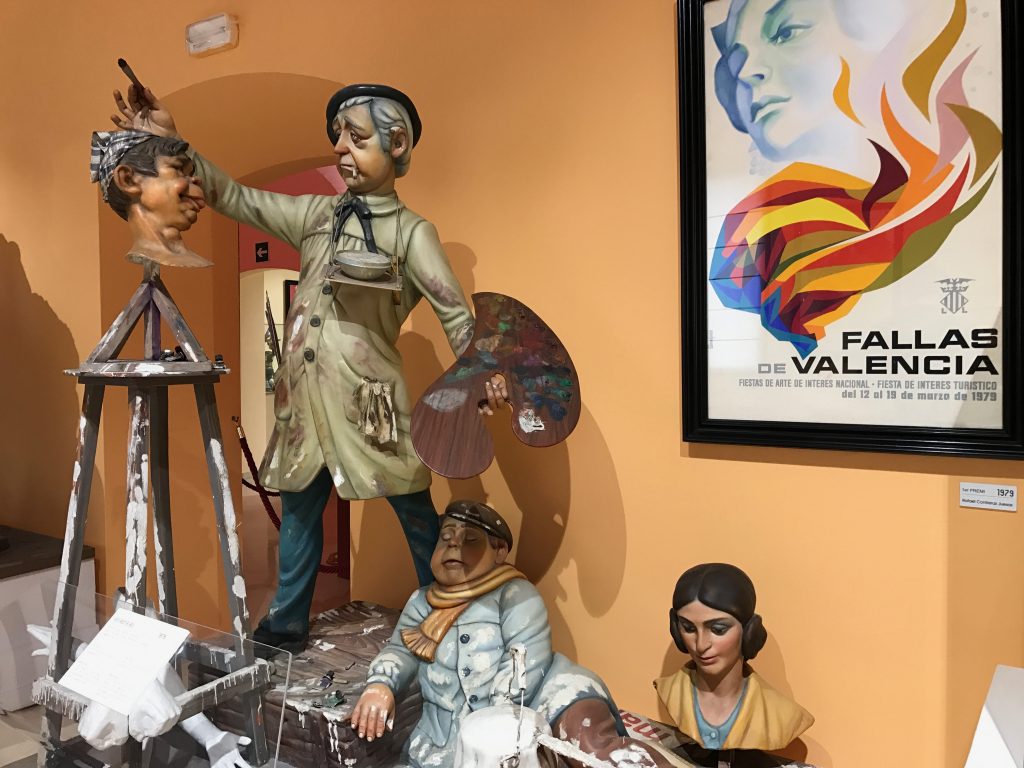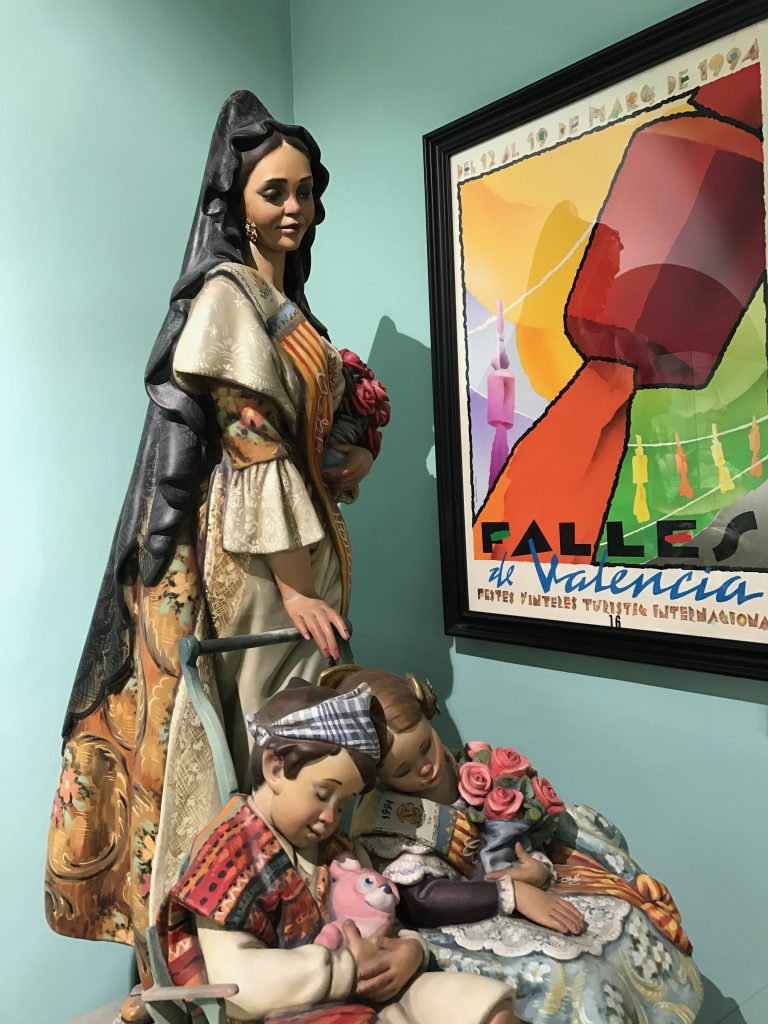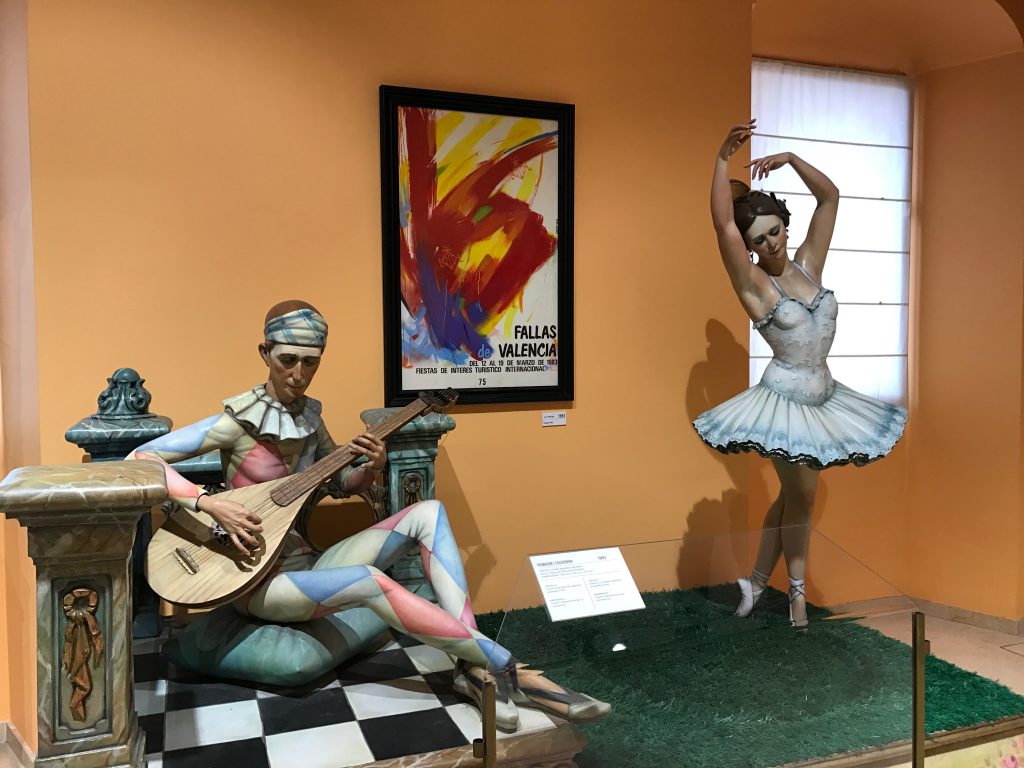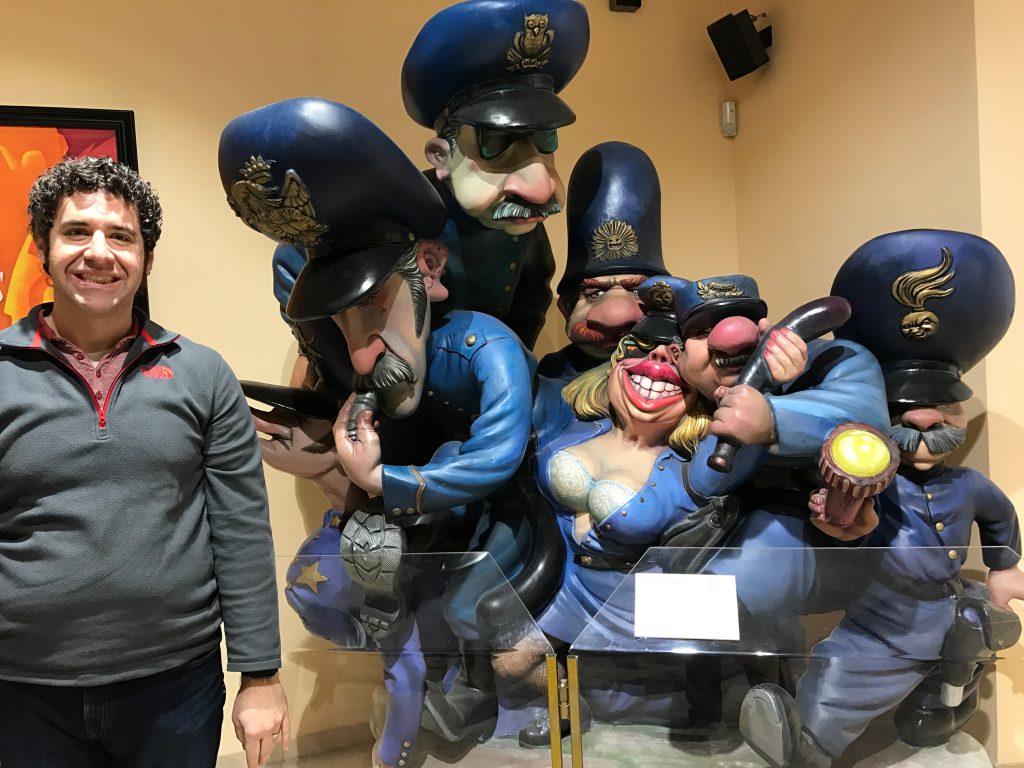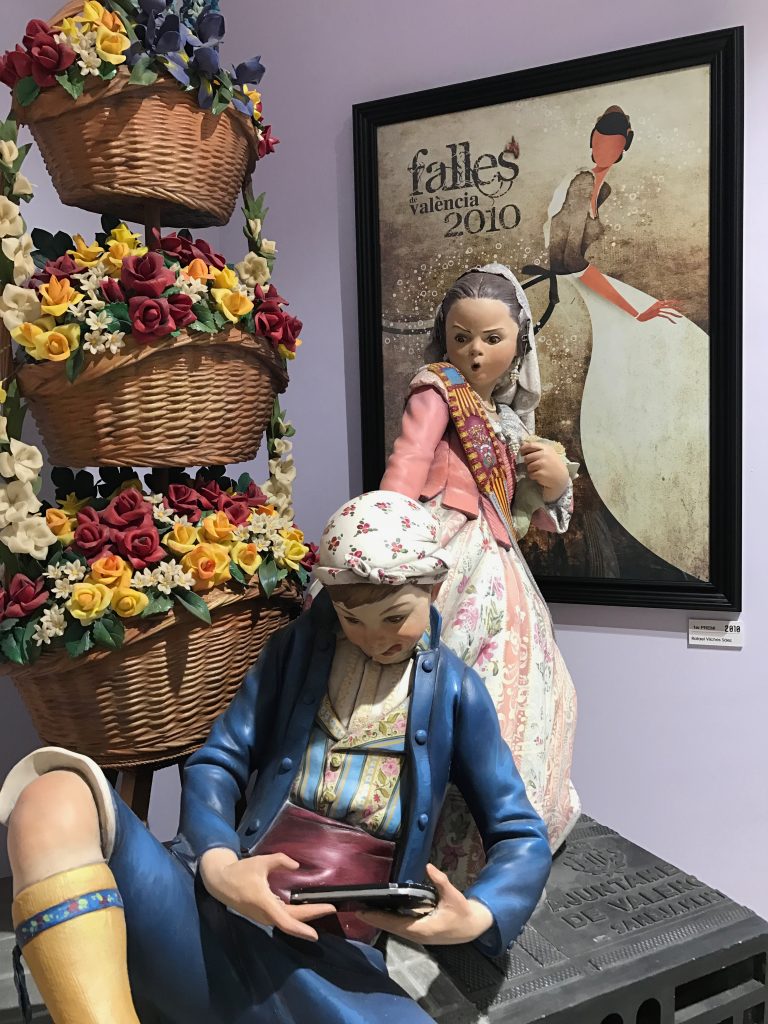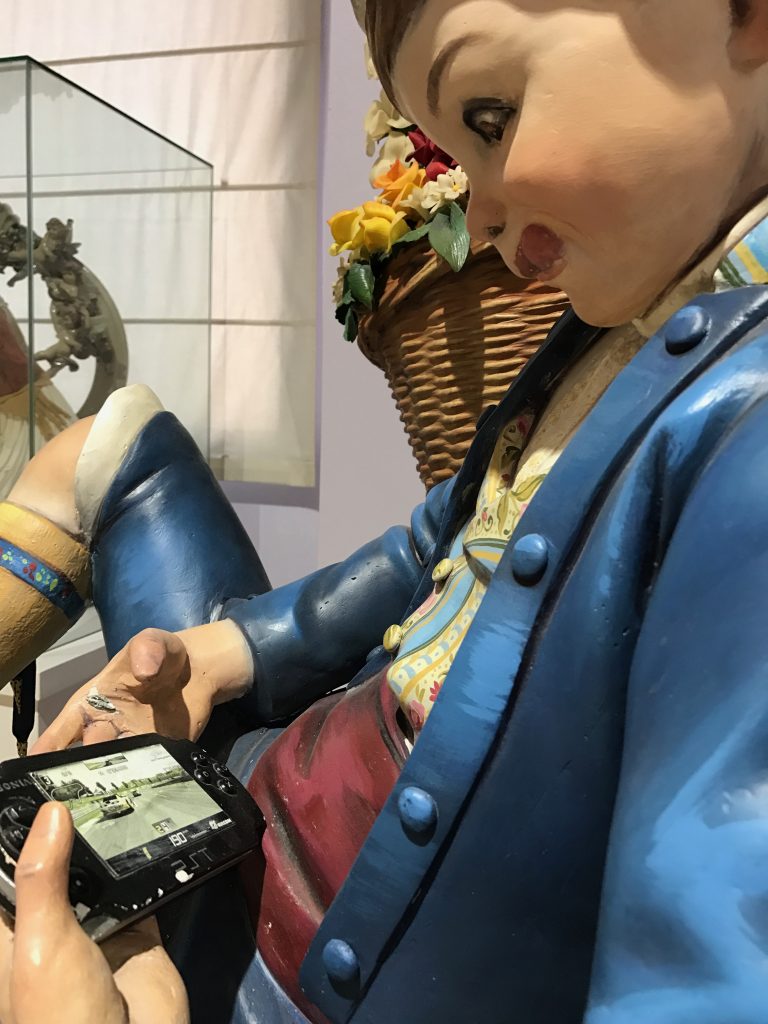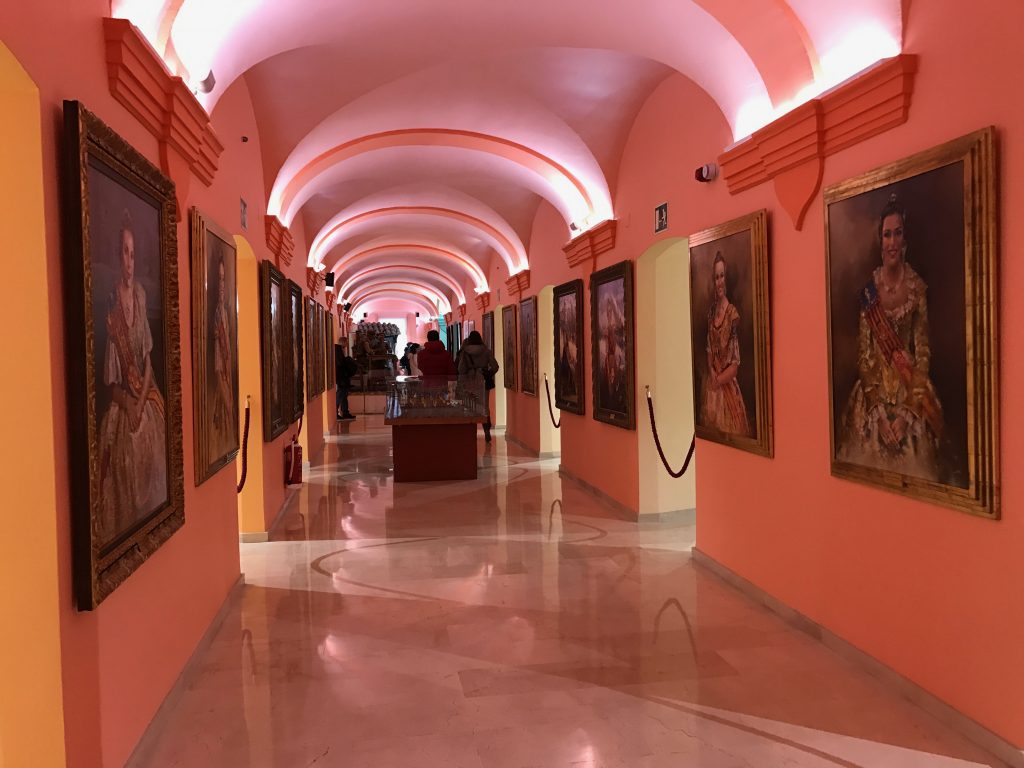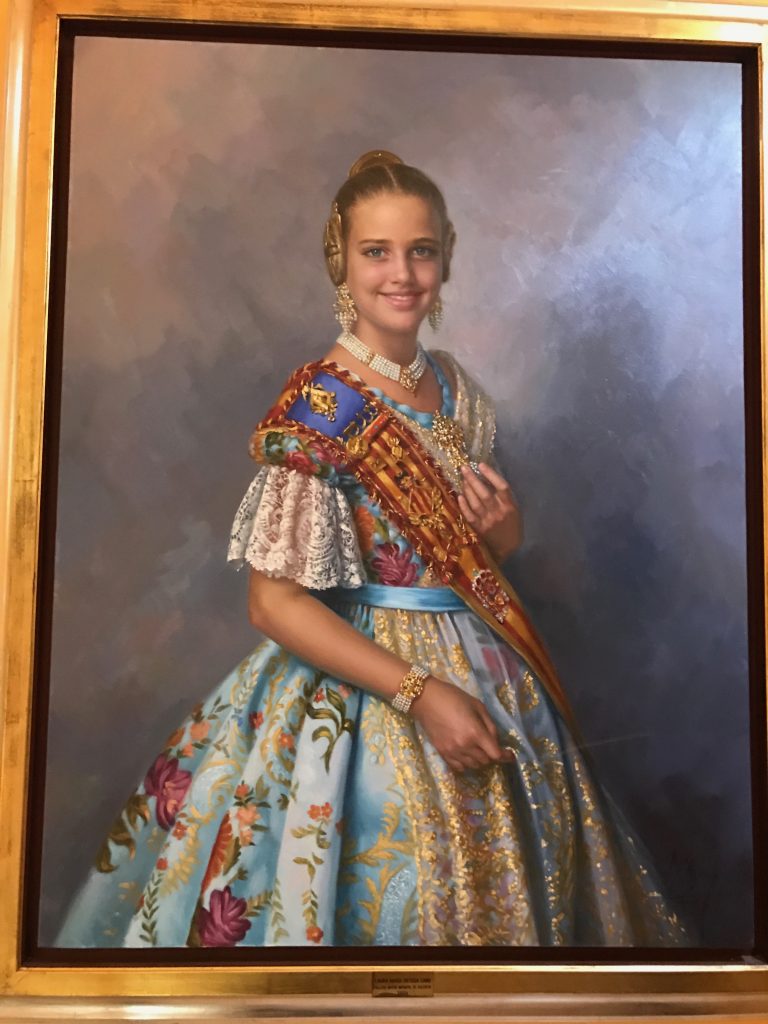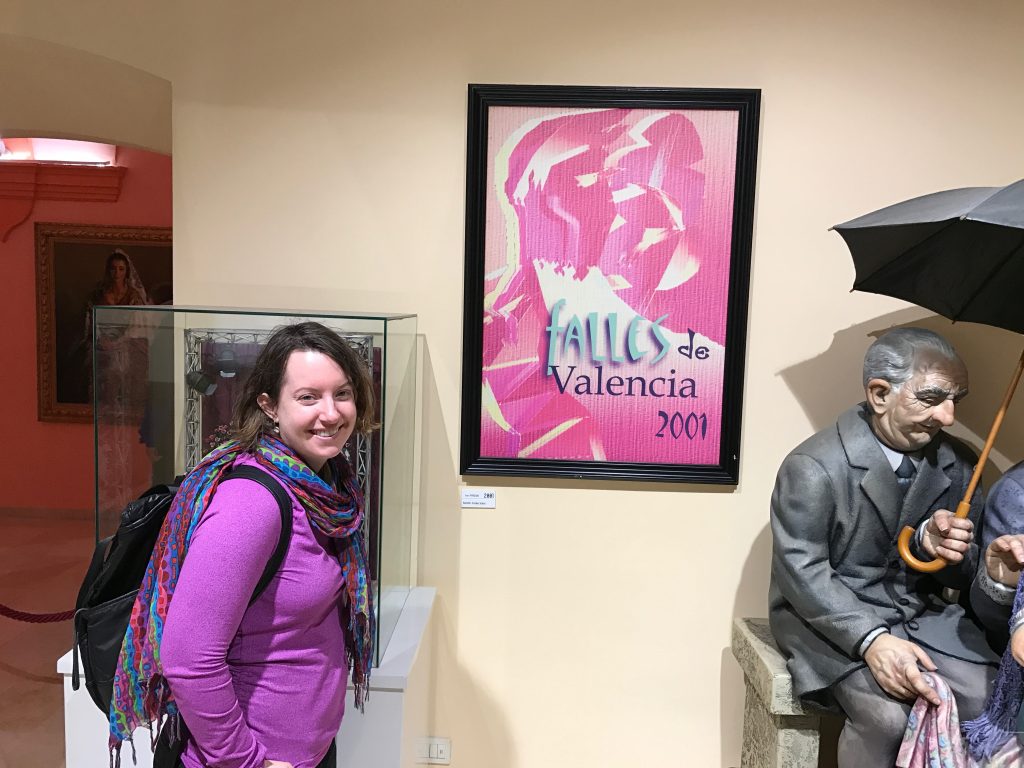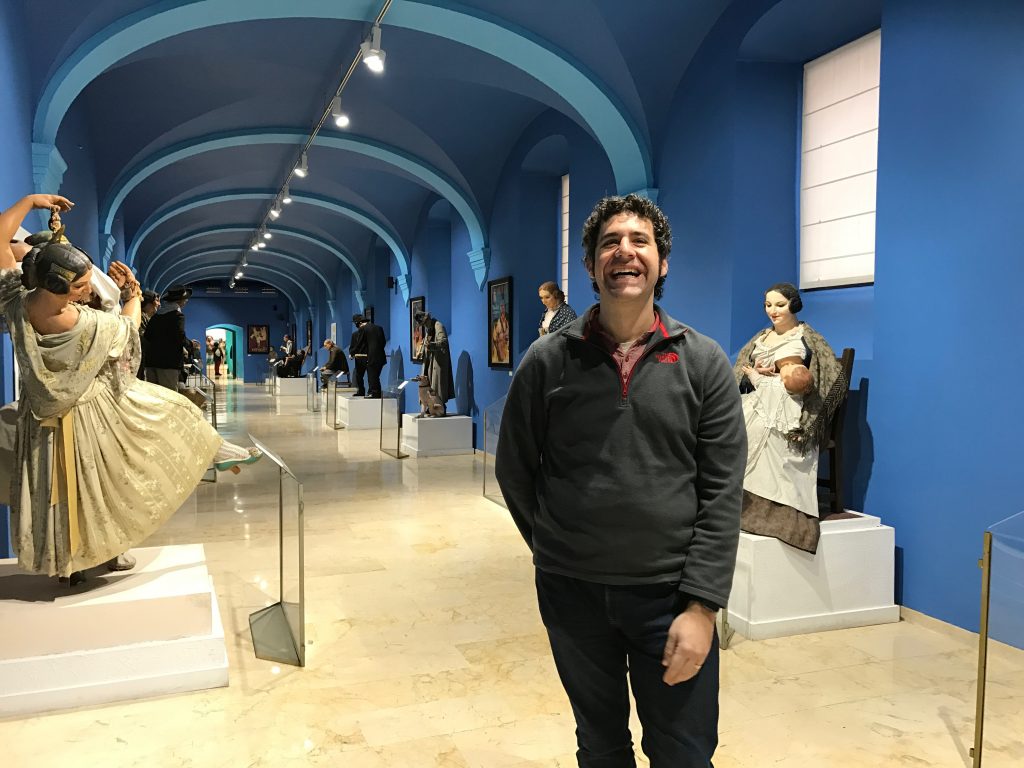
Last month, Doer and I previewed Valencia’s upcoming, most famous cultural event with a visit to the Fallas Museum. Located in an old convent near the City of Arts and Sciences, the Museo Fallero hosts each year’s pardoned ninots. The museum also has a great brochure on the tradition if you want to read more about it here.

The festival dates originated in the mid-18th century, when people gathered on the eve of Saint Joseph’s Day to erect and burn satirical monuments made of wood, cloth, and cardboard. The festival became more complex and artistic around the beginning of the 20th century, becoming a tourist attraction as it was cemented as an important part of the Valencian identity.
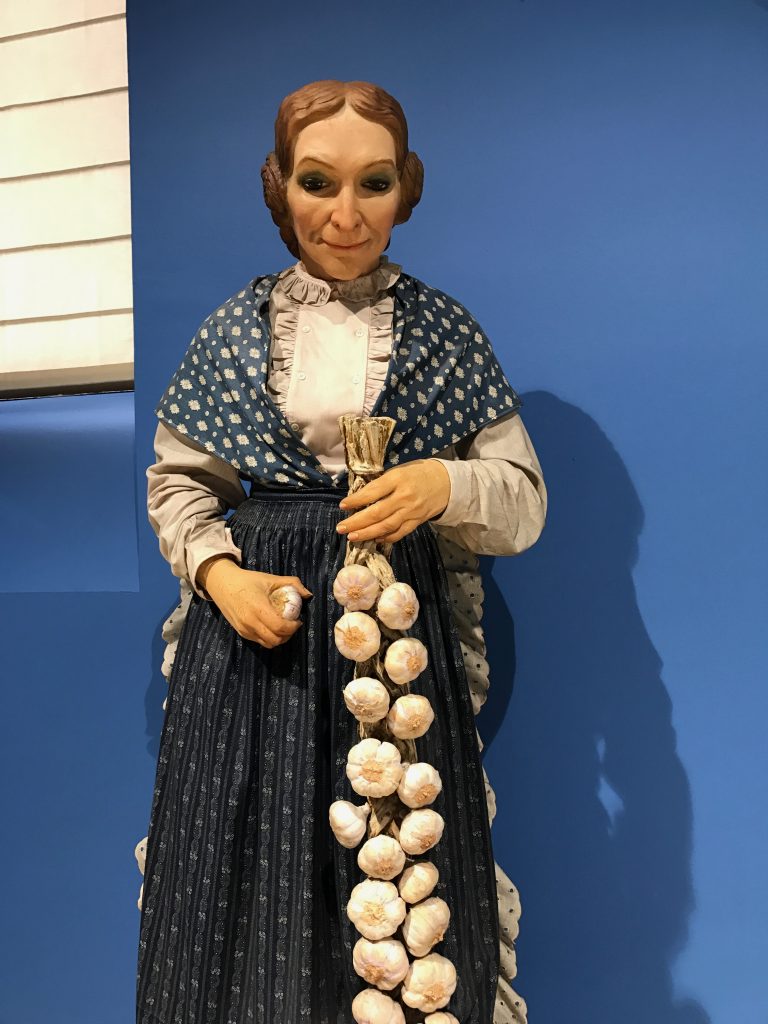
The first ninot (pronounced, “NEE-no”) exhibition was organized in 1934, and from then on one of the creations has been pardoned each year. Satiricism and current events remain central themes of all the entries. The remaining papier-mâché figures made for the Fallas are still sacrificed to giant bonfires at the end of the festival, which we are looking forward to seeing here in mid-March.
The ninots from the 1930s and 40s typically depicted Valencian folklore, or portraits of popular characters and well-known artisans.
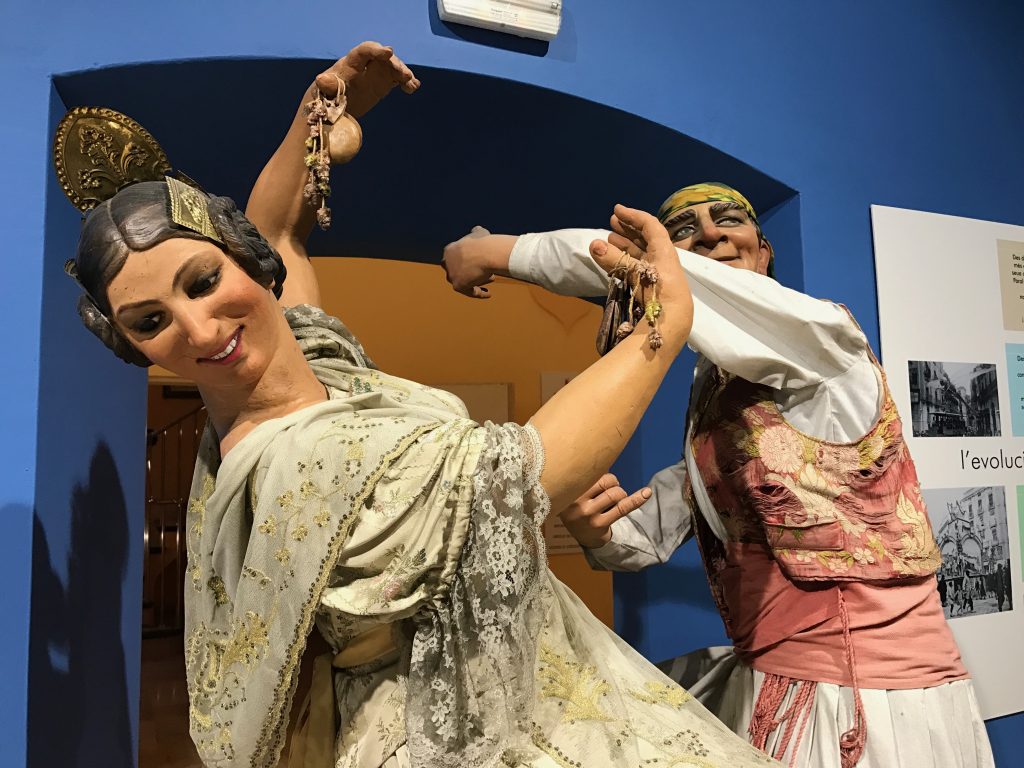
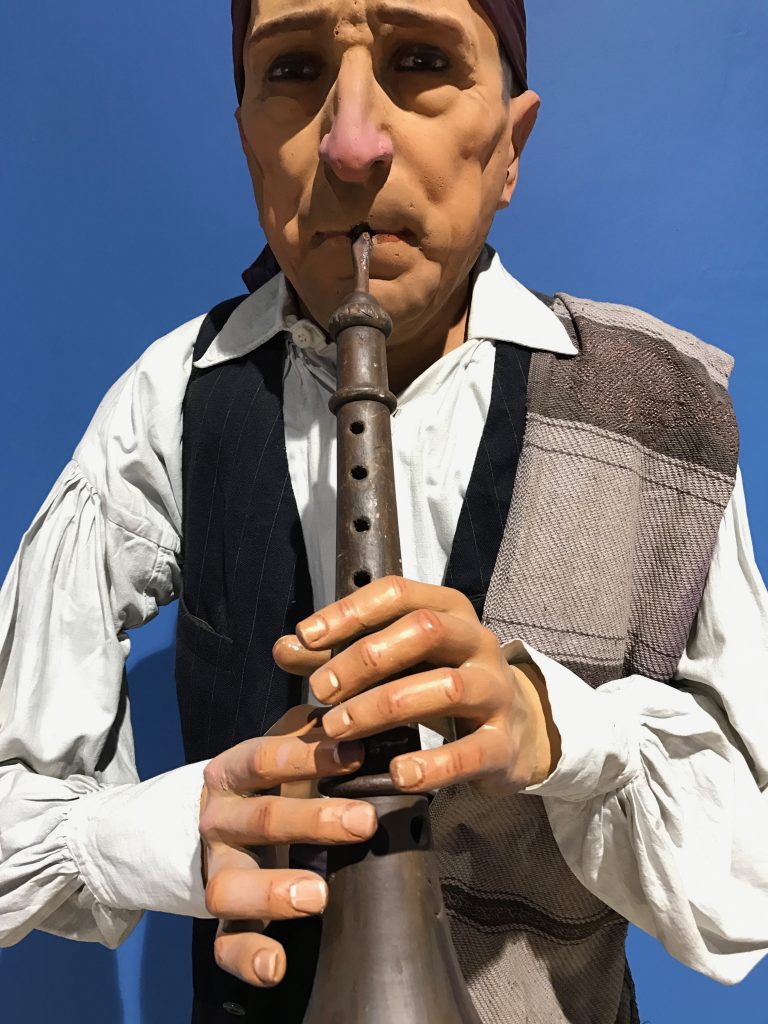
In the beginning, ordinary people constructed the ninots with their neighbors. However, as the festival evolved, fallas artists began to specialize in designing and making the monuments. Sometimes, the artists get cheeky and the monuments push boundaries.
Starting in the 1950s, humor and caricature was promoted, and the ninots saw more references to social subjects and modern imagery.
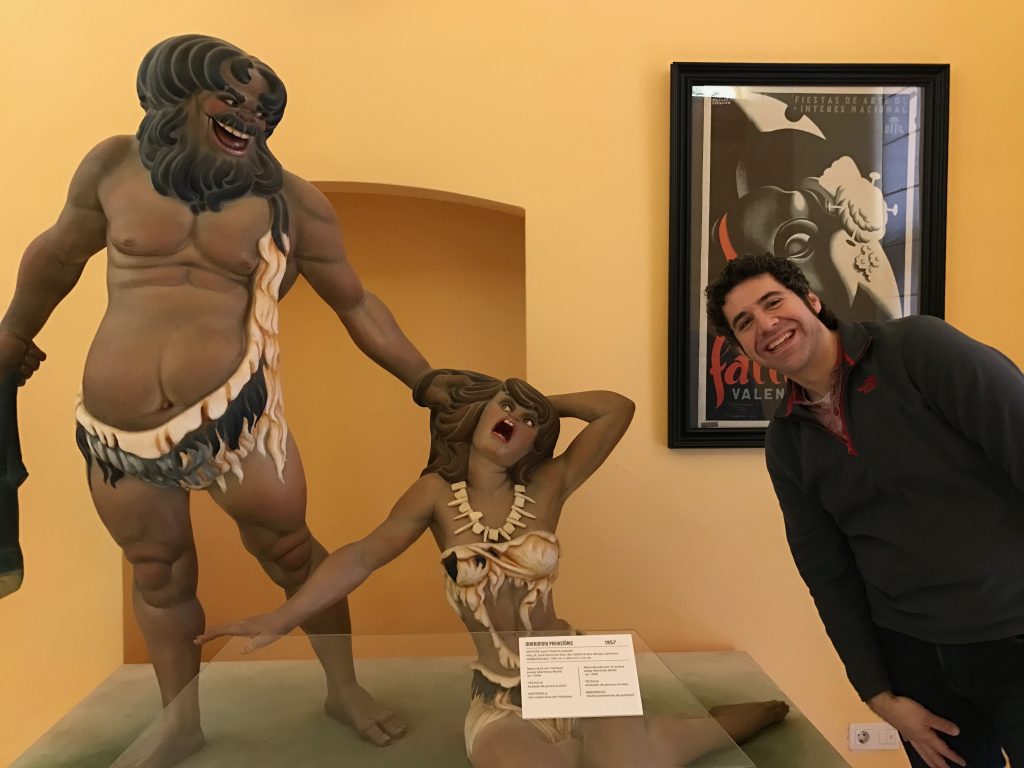
Pop culture seemed to play a bigger role after the 1960s.
What is going on here?
Let’s take a closer look.
Oh, the humanity.
Things did not die down in the 1970s.
This one is titled, “Awakening of Eroticism.”
Depictions of Fallas art and traditions seem to be popular . . .
. . . As are depictions of artistic pursuits in general.
In addition to the ninots, the museum also collects posters from each Fallas, paintings of the Falleres Majors, and badges from the falles commission.


Stay tuned for our visit to the exhibition of the ninots that will be in this year’s festival.


